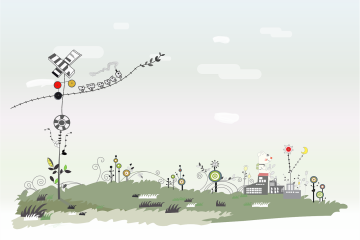A Deeper Dive into Human Behaviour
One of my favourite clients posed a question recently about why if someone has the capability, the competence, and the willingness to do something why is it that sometimes it still does not happen, that got me thinking so I thought I would attempt to answer this as best I can.
The concepts of capability, competence, and willingness often intertwine in the complex tapestry of human behaviour and performance in both personal and professional realms. It’s a common assumption that if a person or entity possesses the ability, skills, and a positive attitude towards a task, they will inevitably engage in it. However, the reality is often more nuanced. This article explores the multifaceted reasons why individuals might not act despite having the capability, competence, and willingness to do so.
Capability: The Foundation of Potential
When we say a person or entity is capable of doing something, we are referring to their potential ability to perform a task. Capability implies having the necessary power, resources, or qualities to accomplish something. So why does capability not always lead to action.
Reasons for Inaction Despite Capability
- Lack of Motivation: Even if someone is capable, they might not have sufficient motivation to act. This lack of motivation can stem from various sources, such as a perceived lack of reward or recognition.
- Environmental Constraints: External factors, like resource limitations, time constraints, or organisational barriers, can prevent capable individuals from performing.
- Psychological Barriers: Fear of failure, perfectionism, or imposter syndrome can paralyse capable individuals, preventing them from applying their abilities.
Competence: The Assurance of Quality
Competence goes a step beyond capability, implying not just the ability but also the skill and knowledge to perform a task well. It is often built through experience and education. Again, possessing competence doesn’t always lead to action.
Reasons for Inaction Despite Competence
- Underestimation of Own Abilities: Even competent individuals might suffer from self-doubt, leading them to underestimate their abilities and shying away from tasks they are well-equipped to handle.
- Lack of Opportunity: Sometimes, individuals do not get the opportunity to showcase their competence due to external factors like workplace politics, market conditions, or social constraints.
- Burnout: Prolonged periods of stress and overwork can lead to burnout, where even the most competent individuals might avoid tasks they are otherwise capable of performing well.
Willingness: The Catalyst for Action
Willingness is a measure of one’s attitude towards performing a task. It suggests a readiness or inclination to do something. While willingness is crucial, it is often not sufficient on its own to guarantee action.
Reasons for Inaction Despite Willingness
- Lack of Direction or Clarity: Even if willing, individuals might not act if they are unclear about the expectations, or the process involved in a task.
- Overwhelm or Decision Paralysis: Sometimes, too many choices or the fear of making the wrong decision can prevent a willing person from acting.
- External Dissuasion: Social pressure, discouragement from peers, or a demotivating environment can hinder a person’s willingness to act.
Bridging the Gap Between Potential and Action
Understanding that capability, competence, and willingness are distinct yet interconnected factors is crucial. To encourage action, it is important to:
- Foster a Supportive Environment: Create conditions that are conducive to motivation and reduce psychological or environmental barriers.
- Enhance Clarity and Direction: Provide clear goals, expectations, and feedback to guide action.
- Acknowledge and Address Personal Barriers: Recognise issues like burnout, decision paralysis, and self-doubt, and work towards mitigating them.
Getting from potential to performance is not always straightforward. The presence of capability, competence, and willingness does not automatically result in the required action due to a variety of psychological, environmental, and situational factors. By understanding and addressing these complex layers, individuals and organisations can better bridge the gap between having the potential to do something and actually doing it.
Get in touch if you want to know more.
Follow me on LinkedIn



0 Comments